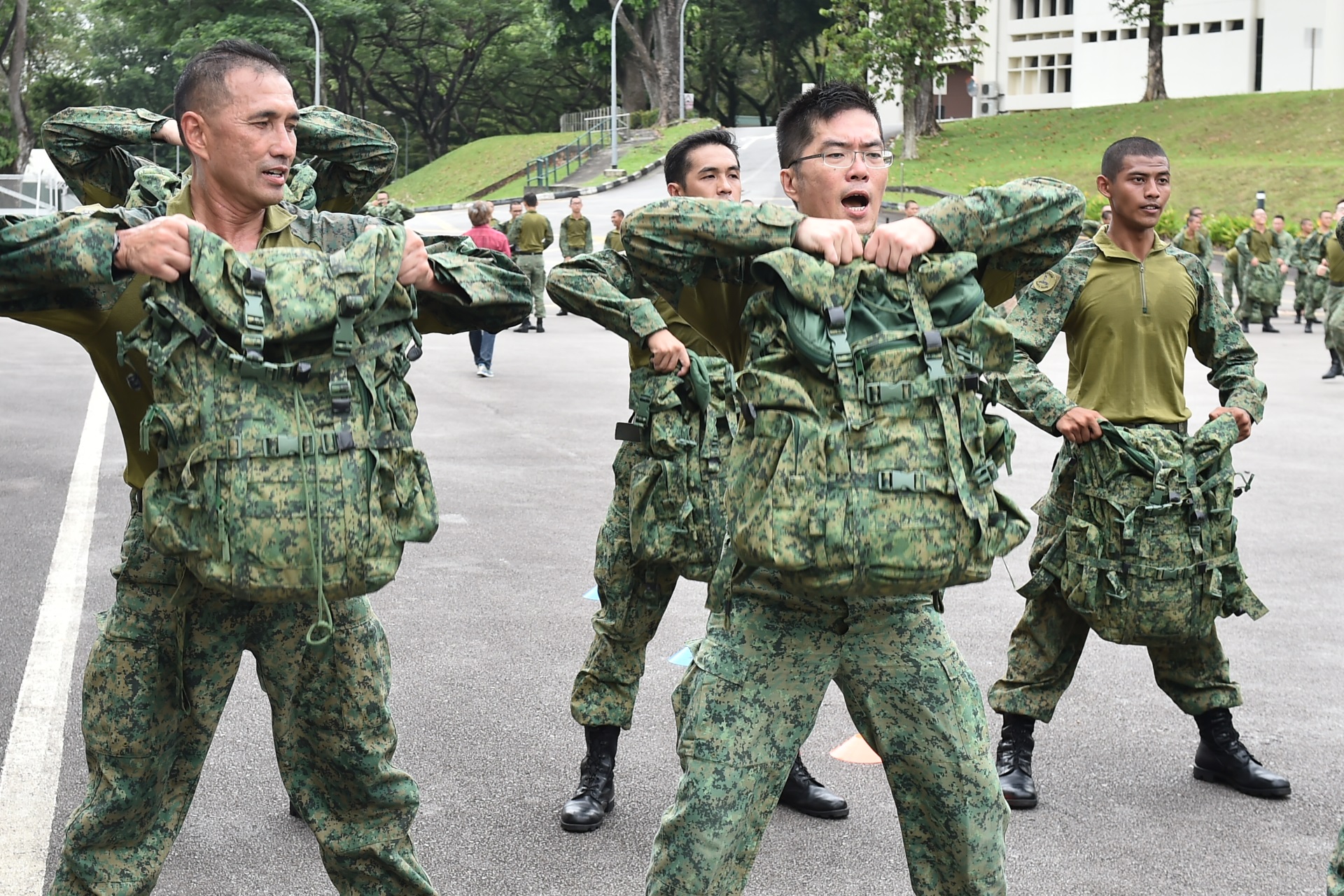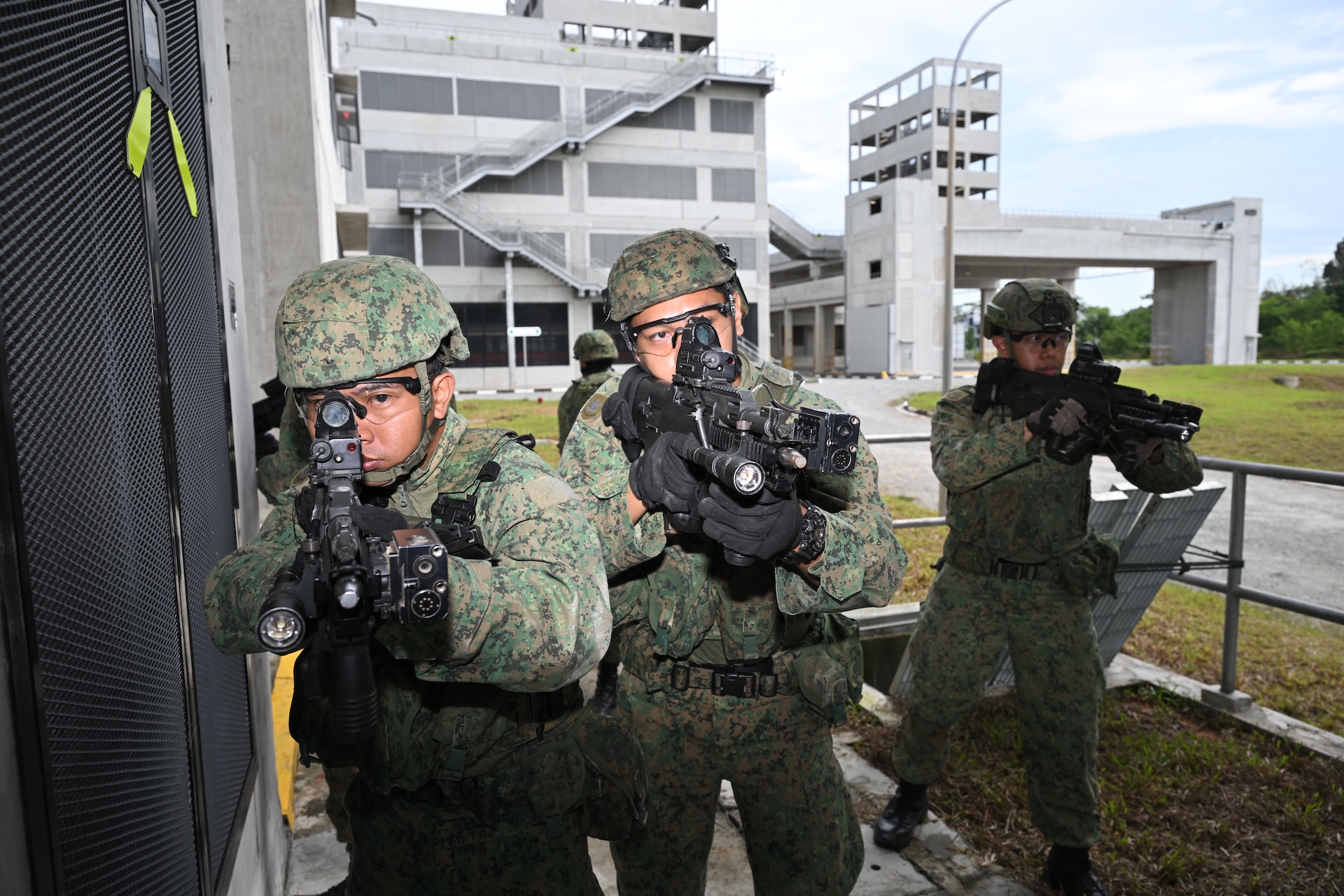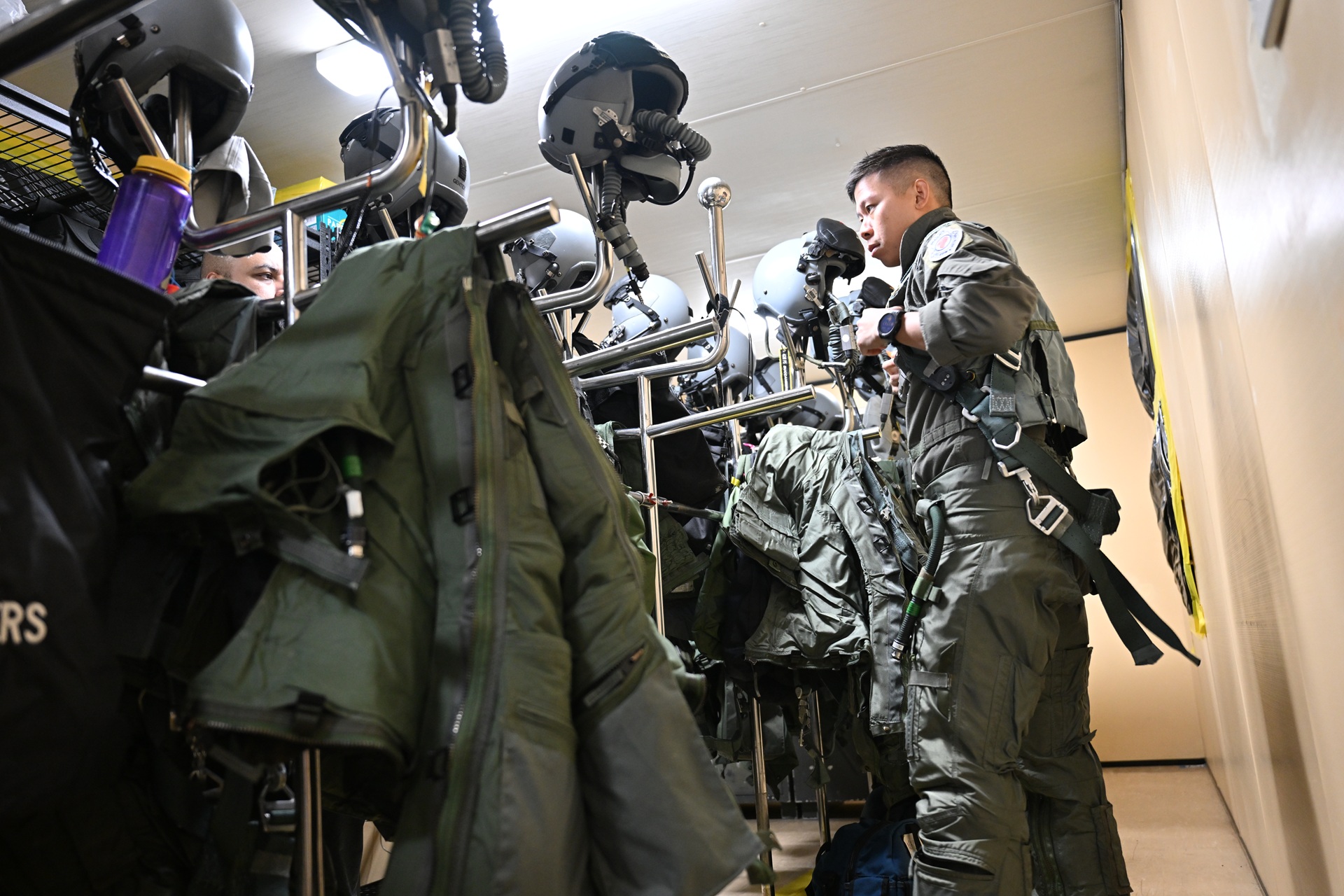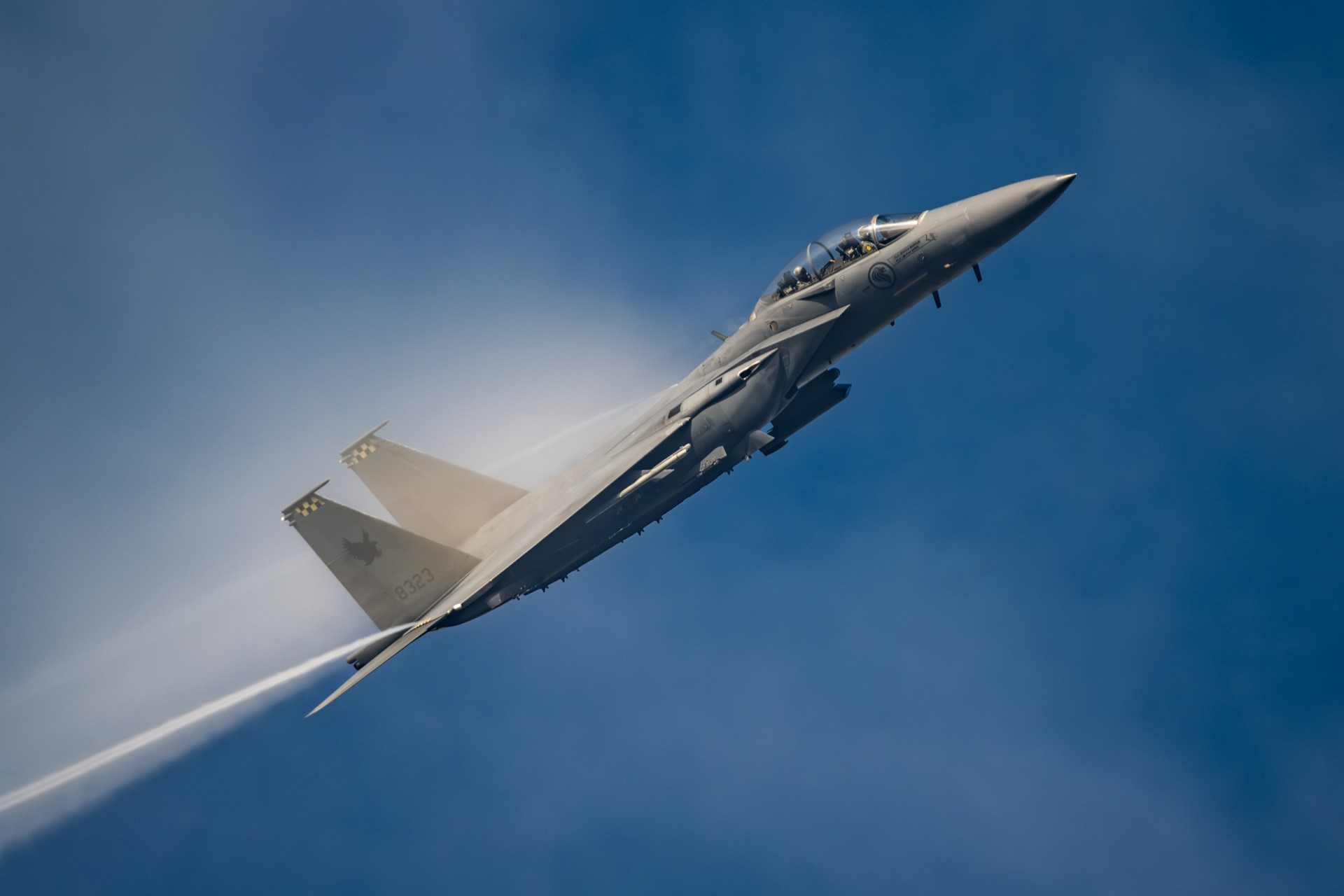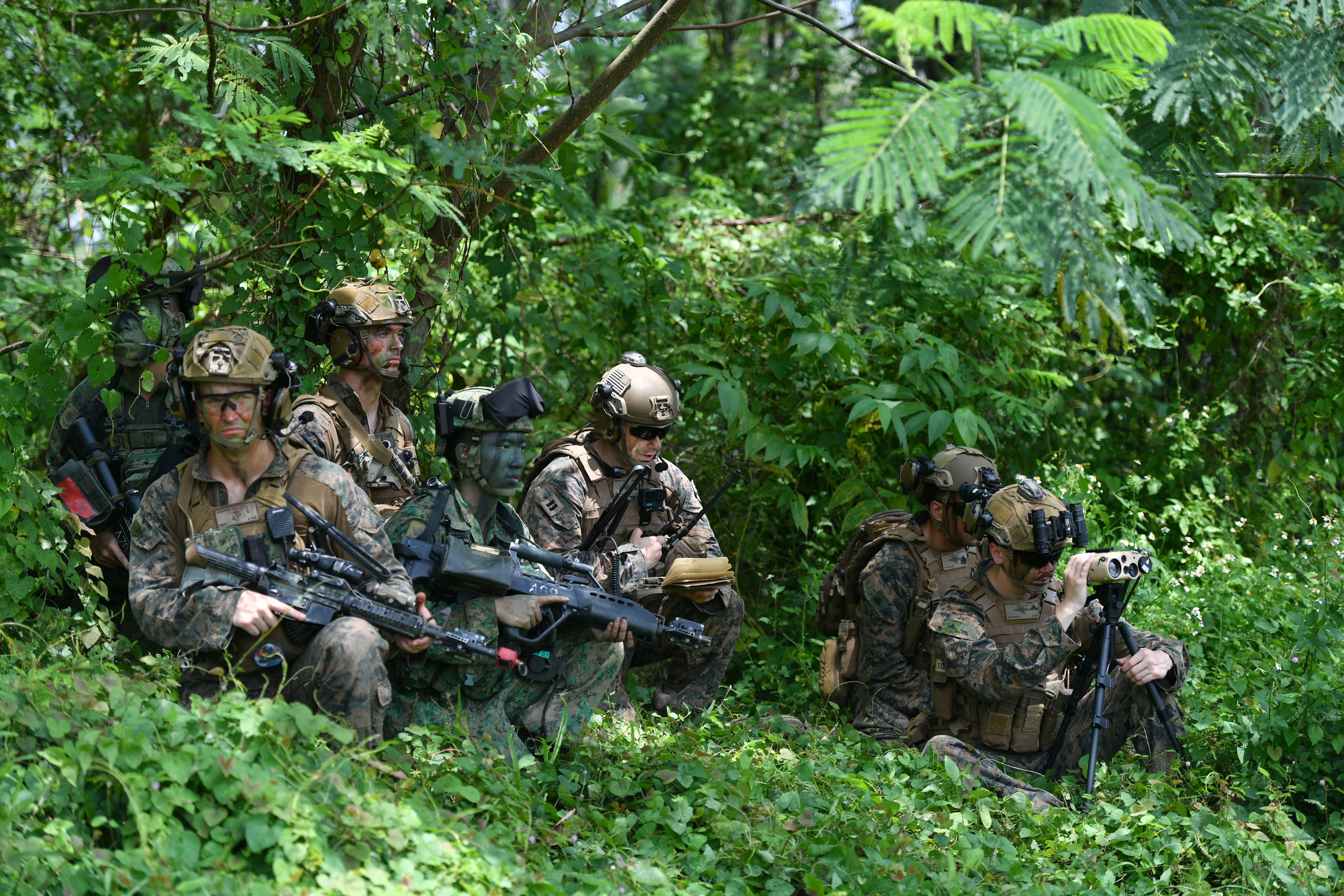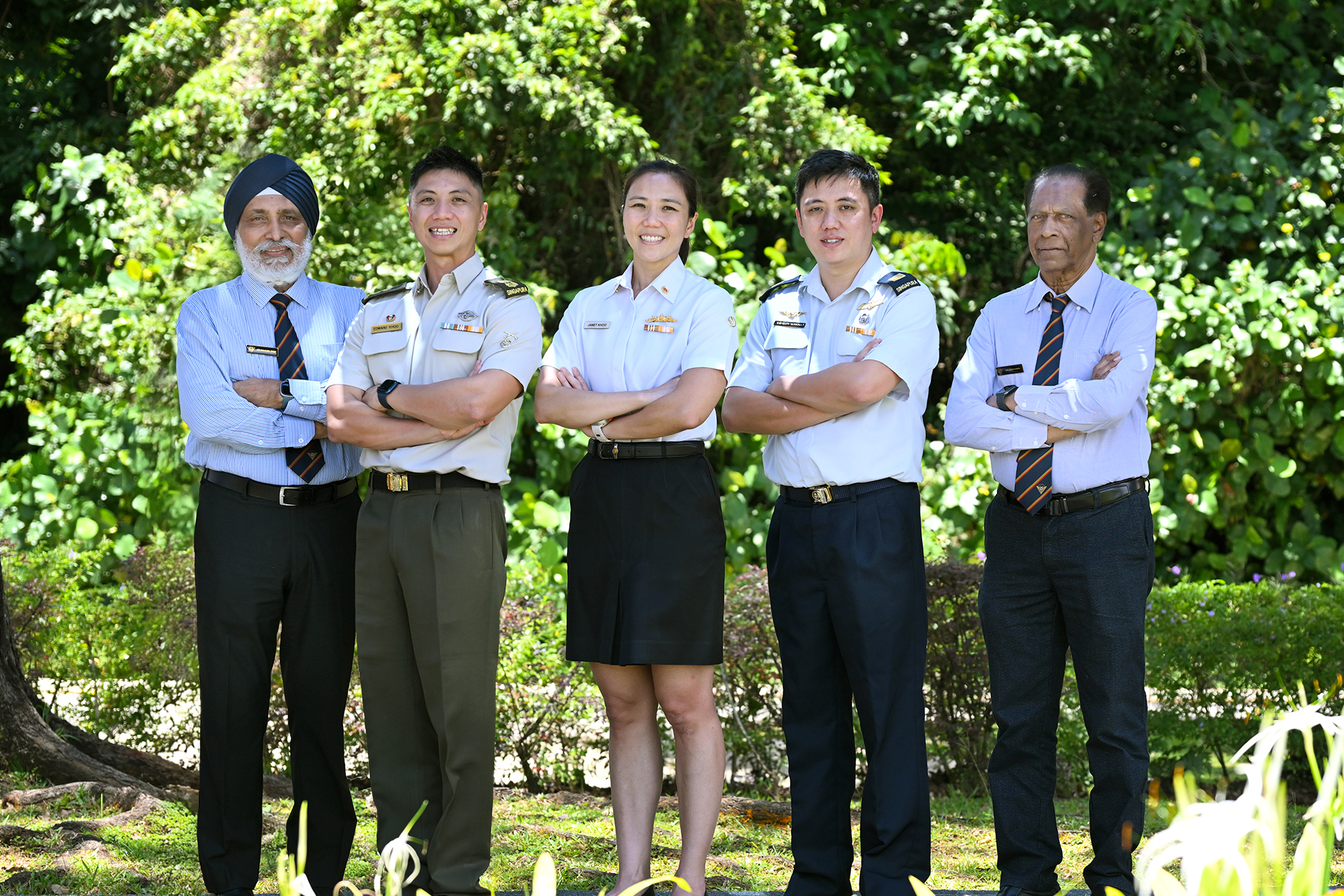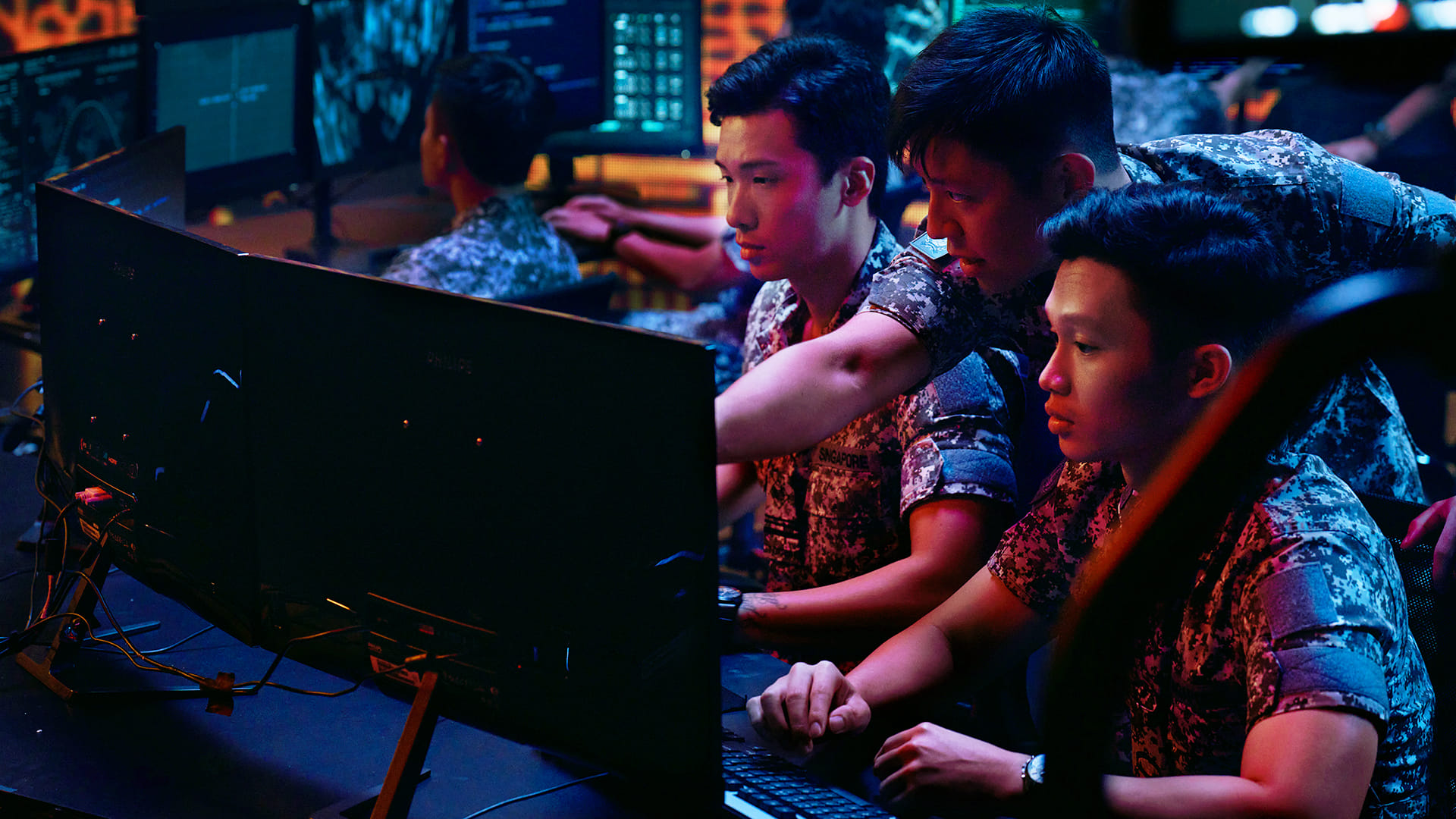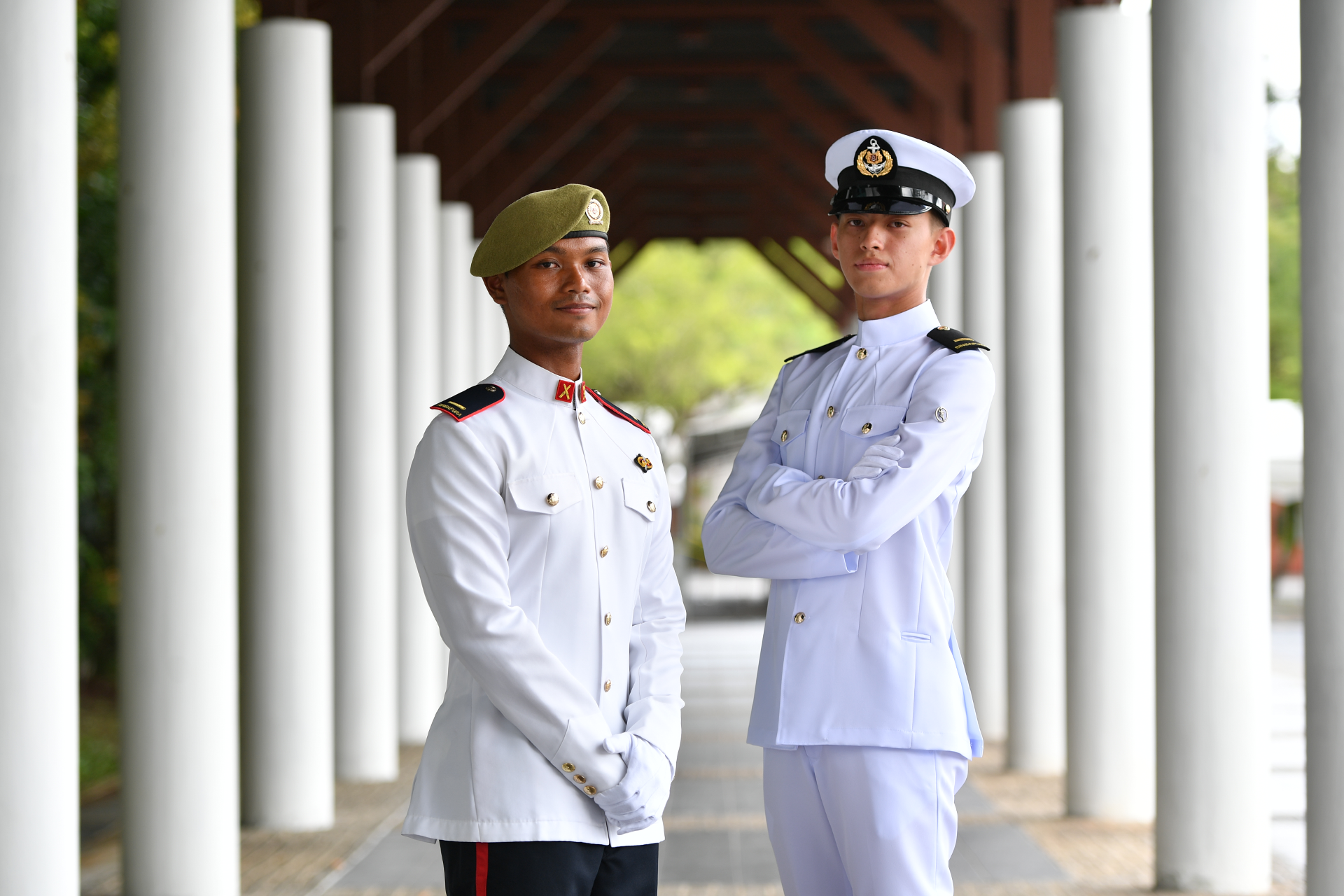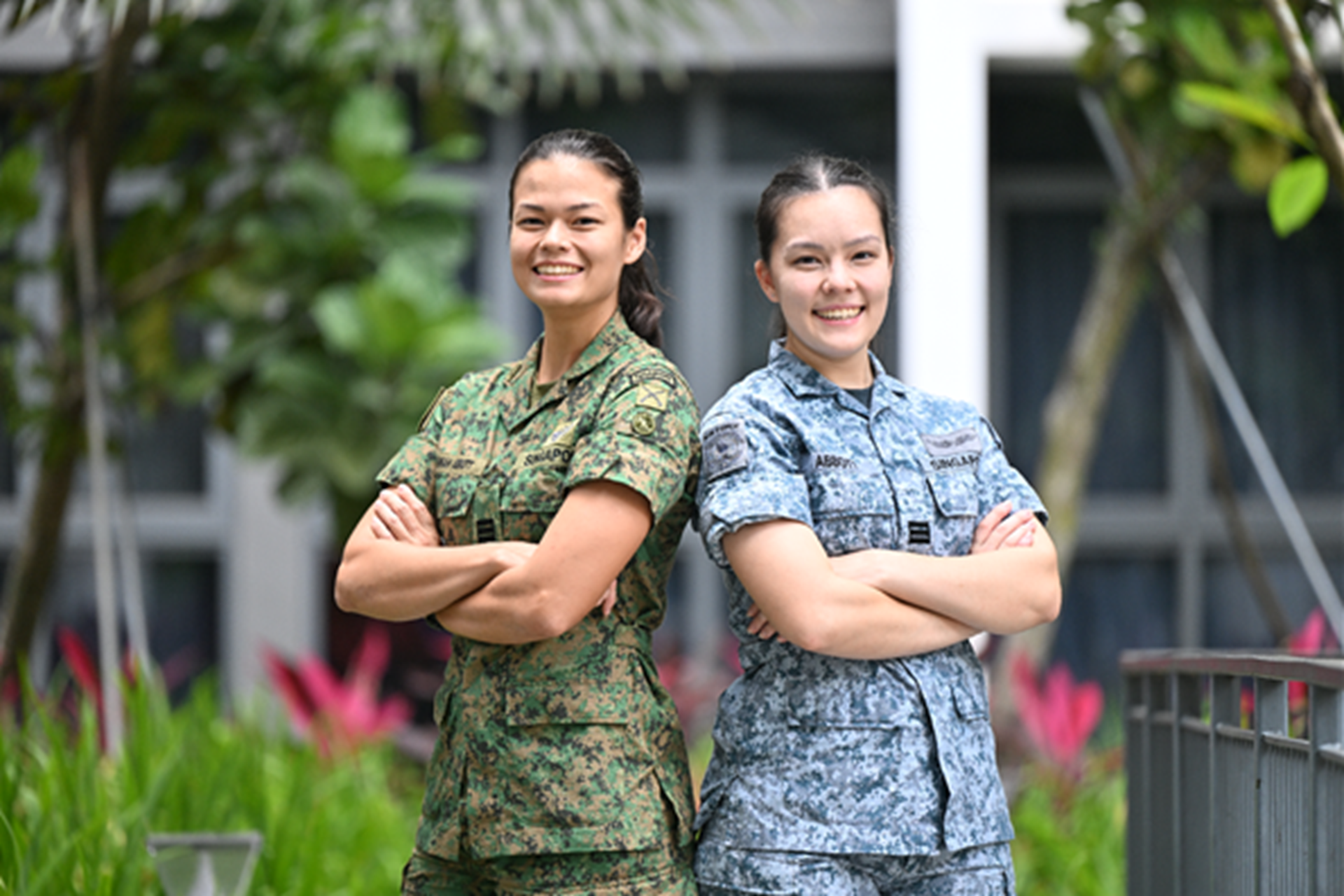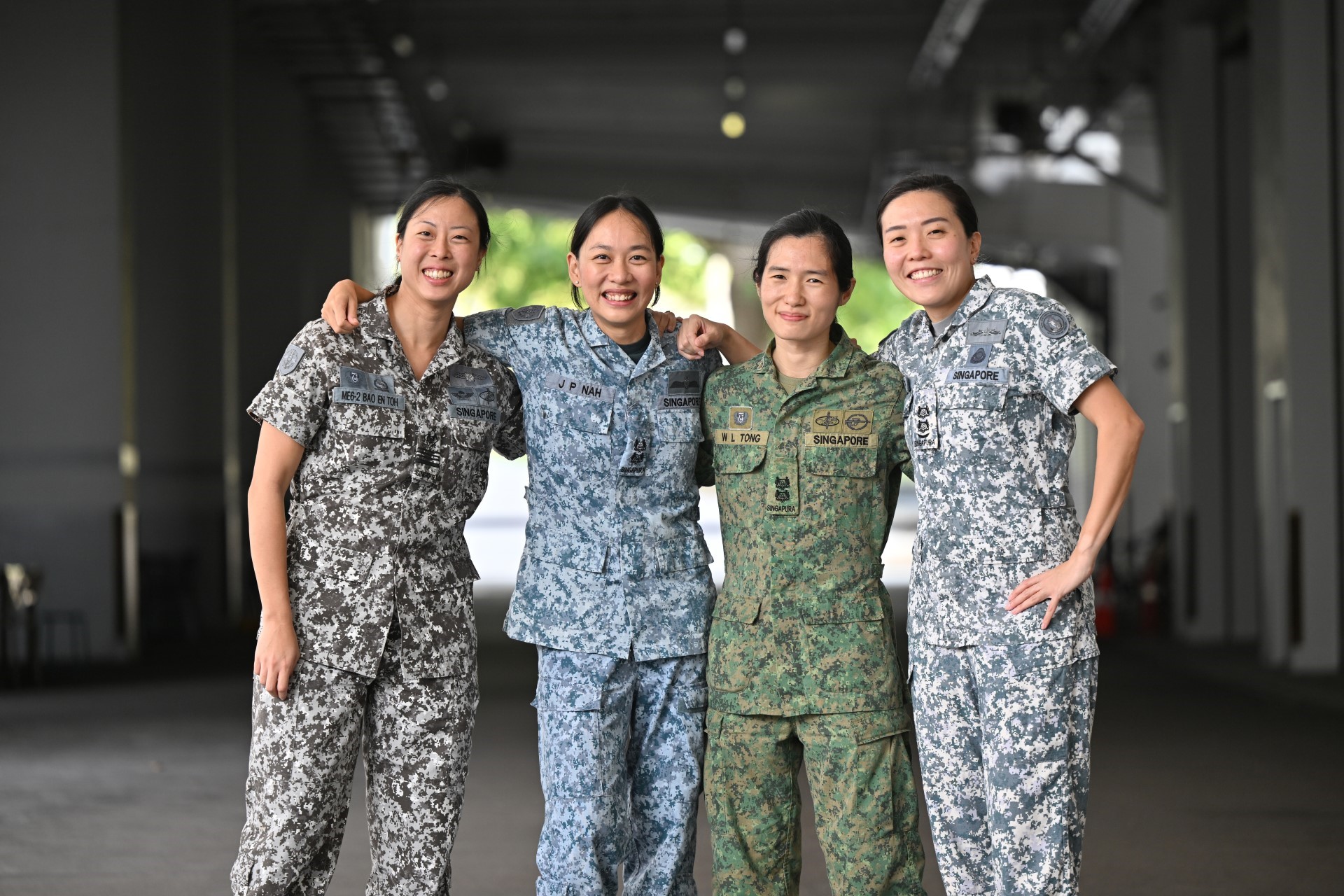SAF ALWAYS READY FOR THE PRESENT & FUTURE: MG ONG
// Report by Koh Eng Beng
// Photos by Tan Yong Quan & Chai Sian Liang
At the top of Chief of Defence Force (CDF) Major-General (MG) Melvyn Ong's list is ensuring that the Singapore Armed Forces (SAF) are ready to ensure the country's safety and security.
He made this point during a media interview at Bukit Panjang Camp on 19 Jun, ahead of SAF Day which falls on 1 Jul.
After witnessing how the SAF was able to mobilise within a week to secure Singapore for the recent Trump-Kim Summit, he is confident that the SAF is ready if called upon.
"We had about 2,000 soldiers who were deployed for the Kim-Trump Summit," he noted. "Our ships were out there, supported by our attack helicopters. We had air defence (units) looking at the skies, (and) we had fighters in the air."
Added MG Ong: "It's a testament that the SAF is ready (and) able to ensure the safety and security of Singapore when called upon, even at short notice."
Preparing the SAF for the future
Among the challenges that the SAF faces is an impending manpower crunch because of declining birth rates.
MG Ong noted that the SAF must plan for the size of its new force in 2030, which will have about 30 per cent fewer Full-time National Servicemen compared to today.
To do more with a leaner force, the SAF will tap on unmanned technologies such as the unmanned watch tower that boosts surveillance and cuts manpower needs, he said.
And to harness the full potential of every soldier, the SAF is using sports science to develop a better training system, MG Ong added.
The Centre of Excellence for Soldier Performance (CESP) was set up in December 2017 to spearhead this initiative.
To reduce and prevent heat injuries, the CESP will soon carry out a trial on wearable technologies, which can collate soldiers' physiological data such as pulse rate, skin temperature and sleep activity.
It is envisaged that commanders can track the data of their soldiers during training. If a soldier is pushing himself too hard – as shown by the physiological data – the commanders can take him out.
Also in the pipeline is a training app that allows soldiers to monitor their own physiological data, and set personalised training goals.
A six-month trial will start in August and involve 150 officer cadets at Officer Cadet School.
Will to fight
MG Ong also recognises that a country's defence is dependent not only on its armed forces' capabilities, but also its soldiers' will to fight.
"The SAF resides in an eco-system which relies very strongly on NS. And, therefore, support for NS is extremely important."
He added: "We must…make sure our NS training system (and) safety systems are always up to date, and continue to support the training and operations of our servicemen."
On the recent passing of Corporal First Class (CFC) Dave Lee, MG Ong said: "The loss of every soldier hits to the heart... We want all our soldiers to go back to their families, and when they don't, we are deeply saddened."
In the wake of the incident, the SAF has established an external panel of medical experts to review its heat injury management measures, added MG Ong.
During a visit to Bedok Camp, the panel spoke to the commanders, and examined the practices that took place during the incident.
While the panel noted that the policies and measures for heat injury management in the SAF today are aligned to industry practices as well as that of foreign militaries, it has proposed further improvements in the area of heat injury prevention and management.
Investigations are ongoing, and the findings will be ready and announced to the public in a few months' time, said MG Ong.
He emphasised that there must be a purpose behind every training, and that all soldiers must follow training directives and the necessary safety coverage.
A strong & ready armed forces
MG Ong concluded that his vision is for the SAF to be ready, dynamic and strong.
"As CDF, I have to make sure that the SAF continues to be ready today," he elaborated. "We (also) have…to make sure that the SAF of tomorrow – for those who come after us – continues to be relevant."
IMPROVING SOLDIER PERFORMANCE
Since its launch last December, the Centre of Excellence for Soldier Performance (CESP) has rolled out the following programmes and equipment:
Vocation-specific training
The Vocation Fitness Training (VFT) is a four-week program customised for each vocation. It prepares newly-minted soldiers – fresh out of Basic Military Training (BMT) – for their advanced combat training.
For example, as infantry soldiers need to march for long distances while carrying heavy loads, their VFT training will focus on strengthening their lower back and core muscles.
Noting that soldiers usually suffer from back, knee and ankle injuries, Senior Lieutenant Colonel (SLTC) Yee Kok Meng, Head of CESP, said: "We want to prepare them physically so that we minimise (any possible) injuries."
The VFT comprises strength and power training which is similar to weights training, and the combat circuit which uses personal equipment like the field pack.
To help them adapt to the usual stress that they will face in the field, soldiers will wear the new hybrid uniform for the combat circuit. As training progresses, they will wear their load bearing vest and helmet.
On his first experience doing the VFT, Private (PTE) Kugan Senivasan, a trooper from 4th Battalion, Singapore Infantry Regiment, said: "It's a step up from the weights we were using in BMT."
"Sprinting, running…are a lot tougher because there's a lot more weight on our body," added the 18-year-old.
The combat circuit exercises mimic the movements that soldiers will usually execute in the field, such as dashing from left to right and right to left, with arms raised as if carrying a rifle.
Unit commanders have to attend a two-day course conducted by CESP trainers before they can conduct the VFT for their soldiers.
A progressive training programme, the VFT is designed to help soldiers to reach their peak before major training milestones such as key overseas exercises, said SLTC Yee.
The VFT has been carried out in all combat units, and will be implemented for combat support units by the end of this year.
In-house care
Other initiatives from CESP include the Rehabilitation at Unit (Rehab@Unit) programmes.
A physiotherapist now visits the unit to provide in-house treatment quickly. In the past, soldiers with injuries have to visit specialist clinics or hospitals for treatments.
Commanders are also trained to look out for early signs of injury.
The Rehab@Unit has been implemented in five Infantry and two Guards battalions.
Results have been promising. These units saw a 30 per cent reduction in musculoskeletal injury that could have led to permanent downgrading of Physical Employment Standards status.
Hybrid uniform
Soldiers now stay cool in the field, with the new hybrid uniform that dissipates heat faster and offers greater comfort.
It is made of both high-performance fabric and the tougher No. 4 uniform pixelised fabric. It is 40 per cent more permeable, and 60 per cent more effective in drying compared to the current No. 4 uniform.
To be worn underneath the integrated load bearing vest, the hybrid uniform is designed for field training.
"What this means is that when the soldier wears the integrated load bearing vest, they will feel more comfortable (and thus)…be able to sustain better and endure longer in a combat environment," said SLTC Yee.
The current No.4 uniform will remain in use for routine activities.
The SAF has started equipping soldiers in combat units with the new uniform since January this year.
Better nutrition
The daily dietary requirement for soldiers has been tweaked to ensure that they consume sufficient calories. For example, a snack bar is given in between meals.
Building resilience
Over the past six months, the CESP has worked with units to develop mental strength training programmes for soldiers during combat training. For example, a mission can be extended to test the resilience of the soldiers. Trials are ongoing.
